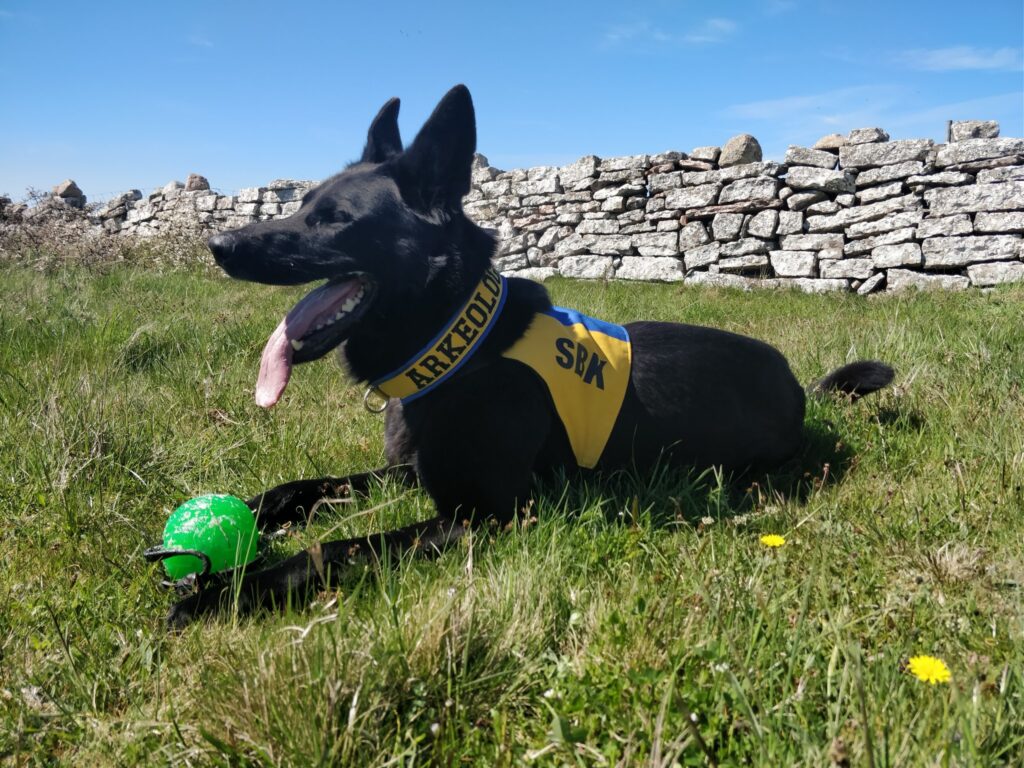Since their self-domestication, dogs have been invaluable to humans with their companionship and work ethic. Applying Canine Detection in Support of Collaborative Archaeology maintains that dogs can identify human burials. Canine detection is a non-invasive archaeological method similar to “geophysical remote sensing methods.” Canine detection is often used for pre-construction archaeological surveys.

Since 1998, The Institute For Canine Forensics (IFC) has trained Historic Human Remain Detection dogs (HHRD). Working breeds such as Labrador retrievers and herding dogs make successful HHRD canines. Training HHRD dogs takes multiple years and requires them to maintain regular training. A dog’s sense of smell enables them to identify cremation remains and human remains with or without bones. Canines are trained to alert their handler when they come across the scent of human remains. Often, canines alert their handlers by laying down, barking, or sitting.
IFC uses canine detection and collaborative archaeology to protect indigenous burial sites. Collaborative archaeology focuses on the historical record, community oral history, and ground penetrating radar (GPR). IFC works directly with indigenous descent communities to ensure possible burial sites are respected. There is a strong emphasis on rebuilding a relationship between indigenous communities and archaeologists, which was ruined in the 20th century. Archaeologists and IFC ensure there is awareness of indigenous trauma and history that impacts current interactions. IFC is committed to only surveying and publishing results with the permission of indigenous communities.
HHRD canines working with IFC have successfully detected indigenous burial sites. Most of these projects have occurred in California and are supervised by indigenous peoples. While there may be some error in Canine detection, the dogs have helped keep indigenous burial sites safe from construction disturbances.

Canine detection is a worldwide archaeological method. In Croatia, dogs alerted archaeologists to six burials at a 3,000-year-old site on Velebit Mountain. Sophie Valluv, an archaeologist, trained her dog Fabel to be an HHRD canine. Initially, Fabel was trained to assist Valluv in a master’s thesis on canine detection. Valluv and Fabel conducted 120 searches for human remains detection. Fabel could differentiate human remains from animal remains and discovered a 1,600-year-old burial. Another HHRD dog named Dax discovered animal bones in Montana that were 3,500 and 5,000 years old. Canine detection and HHRD canines are invaluable to the archaeological use of non-invasive methods of identifying human remains and burial sites.
Bibliography
Grebenkemper, John, Adela Morris, Brian F. Byrd, and Laurel Engbring. “Applying Canine Detection in Support of Collaborative Archaeology: Advances in Archaeological Practice.” Cambridge Core, July 9, 2021. https://www.cambridge.org/core/journals/advances-in-archaeological-practice/article/applying-canine-detection-in-support-of-collaborative-archaeology/11B525724D86698E8D34BBACA00B10A6.
Neimark, Jill. “Can Archaeology Dogs Smell Ancient Time?” SAPIENS, August 17, 2022. https://www.sapiens.org/archaeology/archaeology-dogs/.
Image Credit
Image 1: Modern Dog Magazine
Image 2: DigItScotland

“IFC uses canine detection and collaborative archaeology to protect indigenous burial sites.” — Following what protocol/procedures exactly do canines assist in this progress? What are the major strengths and limitations of this approach?